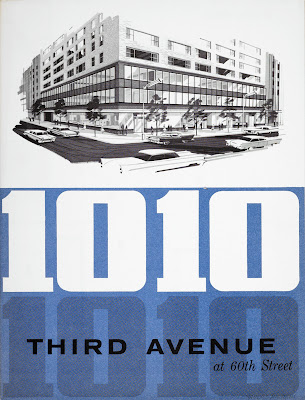 |
| A good portion of the residential advertising in the collection might be considered aspirational... |
 |
| Very Don Draper! |
 |
The brochure (c. 1969) for 111 Livingston Street, a commercial office building in Downtown Brooklyn,
touted it as "5 minutes from Wall Street" (see below) with "high-speed, computer-controlled elevators,"
"prestige design", and "Its own energy system"— generators, water, the works... I can almost imagine the sleek, space-age "machine for living" (or working) they thought they were crafting.
The reality today is a stained and dog-eared International Style/Brutalist hybrid that's parked like a loiterer in Brooklyn Heights. |
 |
| "attended lobby with message receiving service"... |
 |
| "Manual for Tenants"... c. 1954 |
I stumbled across the online
New York Real Estate Brochure Collection in Columbia's Avery Architectural & Fine Arts Library.
It comprises 9,200 advertising brochures, floor plans, price lists, etc documenting
residential and commercial real
estate promotion in New York City from the 1920s to the 1970s. The collection
was compiled over the years
by the printer of these brochures.They were actually printing samples! While the collection is only as good as the caliber of work associated with this particular printer—and you need to have a fascination with floor plans to really get excited—there are some noteworthy pieces. I especially liked the iconic (might we say cliched?) mid-century advertising lettering. Also of note are the hundreds of leaflets for red brick and later white brick mid-rise apartment
blocks. (And I do use that word in a considered fashion.) Untold legions of these buildings pockmark the city. Not nearly as bad as today's
Fedders Buildings, they are a sad lackluster lot none the less. Ok, yes, I might possibly be able to appreciate a few of the formerly reviled white
brick apartment buildings. (When they're good, they're actually a step up in a "That Girl", zingy kind of way.) It is the red brick buildings, typically with terraces, utilitarian to the extreme and without any hint of flair, that are, in a word, soulless. I know, I grew up in one.
 |
| a typical Outer Borough, mid-rise red brick apartment block |










































